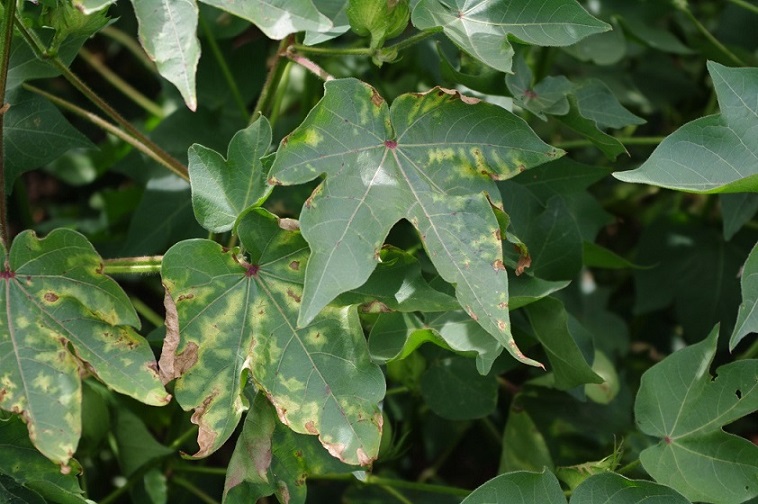- Wilt disease is a growing soil-borne disease in cotton production areas.
- It can be difficult to differentiate other diseases and wilt.
- In young and grown plants, the first symptom is the yellowing of the edges of the leaves and the area around the veins i.e. the discoloration begins at the margin and spreads towards the roots and stems and midribs. The leaves loosen their torsion, gradually turn brown, dry up and eventually fall. To prevent this disease, soil treatment, and seed treatment are very important.
- This disease is caused by cold temperatures and wet soil during early vegetative growth, plants are infected during the early reproductive stages, but symptoms appear later.
- Fungicide is used for the prevention of this disease.
- Carbendazim 12% + Mancozeb 63% WP 2.5 gram / kg seed or Carboxin 37.8% + Thyram 37.8% 2.5 gram / kg seed. Treat seeds with.
- Spray kasugamycin 5% + copper oxychloride at the rate of 45% WP @ 300 gram / acre or thiophanate methyl 70% WP 500 gram / acre.
- Use of Bacillus subtilis / Trichoderma viride @ 500 gram / acre or Pseudomonas fluorescens @ 250 gram / acre in biological treatment. These fungicides are used as soil treatment and seed treatment.
- In the case of more problems, decomposers can also be used before sowing the crop in an empty field.

Gramophone
